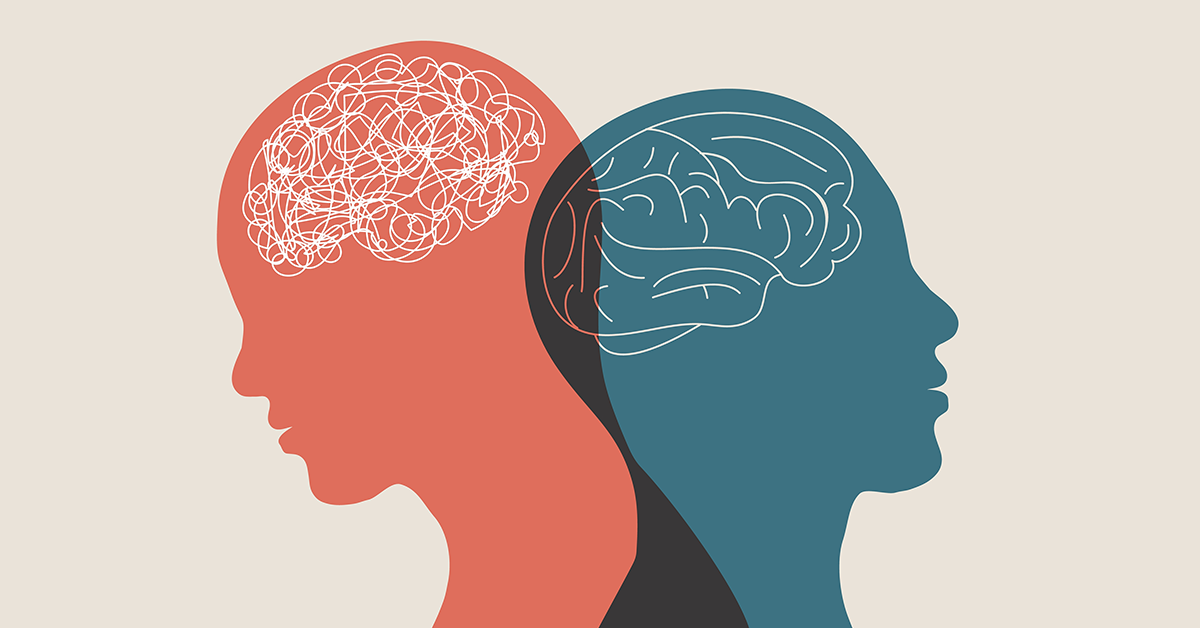
Bipolar disorder (BP), previously known as manic-depressive disorder, is a psychological condition where the patient experiences extreme highs and lows (depression and mania). These aren’t just normal mood swings; these intense mood episodes can interfere with the patient’s everyday life and relationships. A patient typically experiences one or two episodes per year.
To classify as a manic episode, three or more of these symptoms need to be presented consistently for at least seven days. Also, symptoms cannot be due to drug use and other medical conditions.
On the other hand, hypomania carries the same symptoms with a lighter degree of severity and lasts up to 4 days.
According to personal patient accounts, mania is not a super high and happy feeling. It can be overwhelming, terrifying, and exhausting. Reckless decisions taken within this episode may have serious consequences that the patient must deal with once the mania recedes. Regardless, such mood swings and emotional highs can be mentally taxing on the patient.
These symptoms must persist for two weeks or more for the condition to qualify as a depressive episode.
In type 1, the patient experiences varying levels of the manic phase, which may be interspersed with bouts of depression. Depression is not a requirement for the diagnosis of type 1 BP.
In type 2, the opposite occurs: the patient mostly experiences varying degrees of depressive episodes, interspersed with hypomanic ones. The patient is likely to experience major episodes of depression after the manic episode.
BP has specifiers associated with the disorder that patients may or may not feel; you can experience BP with or without specifiers. These specifiers are of two categories:
Some specifiers that fall in the first category are anxious distress features, melancholic features, and psychotic features.
Rapid cycling is a course specifier for type 1 and 2 BP that falls in the second category.
Rapid cycling bipolar disorder is a term that defines a pattern of manic-depressive episodes. To qualify as rapid cycling, the patient must experience four or more episodes of mania or depression within twelve months. These episodes can alternate between mania and depression or can either be of one type. For example, a patient with type 1 rapid cycling bipolar disorder may experience consecutive manic episodes. However, if the patient experiences consecutive episodes of mania (or depression), they must be separated by a two-month period to be counted as separate episodes.
Although unfortunately, bipolar disorder is not short-lived, rapid cycling can be temporary and recede after some time. It is also possible not to experience it at the onset of the disorder but rather to develop the pattern later in life.
Rapid cycling may also have subtypes categorized based on the frequency of the episodes.
However, there is a difference of opinion on whether these are distinct patterns of rapid cycling or just unstable mood changes associated with the disorder.
It’s not exactly clear why rapid cycling occurs or any clear triggers. Experts have extensively studied patients and proposed several possible reasons.
Rapid cycling is seen to affect women more than men. Around 10-20% of BP patients experience rapid cycling, and 70-90% are women. The chances increase when genetics come into play.
It has also been observed that rapid cycling more commonly appears:
Rapid cycling bipolar disorder is diagnosed when the patient experiences a manic episode alongside multiple hypomanic or manic episodes or depression. Since it requires over a year of recurring episodes, it can take some time to diagnose.
Rapid cycling in type 2 BP can be difficult to identify since the patient spends most of their time depressed; a study suggests the amount of time spent in a depressed phase is more than 35 times that of the hypomanic phase. These episodes can also wane off without a resolution, so the patient may not exactly identify distinct episodes. Due to this reason, rapid cycling bipolar disorder may be misdiagnosed as unipolar depression. As a result, rapid cycling BP is often under- or misdiagnosed.
If you have BP and suspect rapid cycling, keep a journal or chart to track your:
Give all this information to your doctor on your next visit for a proper diagnosis.
What are the treatment options for rapid cycling bipolar disorder?
Fortunately, the disorder can be managed with medication. After a proper diagnosis has been made, it may take some time to personalize your medication routine to what suits you best.
Sometimes, patients may discontinue medication use once they start feeling better or change their dosage and frequency. This is highly inadvisable without a doctor’s recommendation, as this can trigger rapid cycling episodes.
See Also: How Often Does Adhd Co-Occur With Bipolar Disorder?
Rapid cycling BP is a condition that significantly increases the chances of suicide. If you suspect any symptoms of rapid cycling or BP, consult a doctor immediately. The disorder can be extremely emotionally taxing on patients; if you suspect someone you know going through such episodes, it is advisable to be patient with them and try to get them to open up about their feelings and concerns.
*All criteria listed in this article are per the DSM-5.